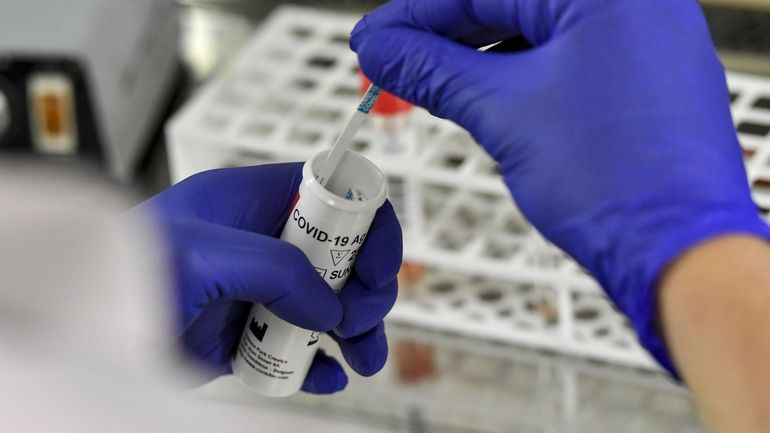A newer variant of the SARS-CoV-2 virus, which causes Covid-19, is dominating the global coronavirus infections, according to a recent study.
Research, published in the journal Cell, shows that a specific change in the SARS-CoV-2 coronavirus virus genome is more infectious in cell culture. The variant, D614G, makes a small but effective change in the virus's 'Spike' protein, which the virus uses to enter human cells.
"The D614G variant first came to our attention in early April, as we had observed a strikingly repetitive pattern," said Bette Korber, a theoretical biologist at Los Alamos National Laboratory and lead author of the study.
"All over the world, even when local epidemics had many cases of the original form circulating, soon after the D614G variant was introduced into a region it became the prevalent form," she added.
Geographic information enabled the researchers to track the highly recurrent pattern in the virus, from the original form to the D614G variant, which happened at every geographic level, according to the GISAID Covid-19 viral sequence database.
The shift from the original form to the D614G variant was a highly recurrent pattern, occurring at every geographical level, according to the researchers.
They were able to track the pattern in the virus using geographic information from samples from the GISAID Covid-19 viral sequence database, which researchers used to share outbreak sequences worldwide.
According to this data, the shift in the virus occurred at every geographic level: countries, subcountries, counties and cities.
Related News
- 2 in 3 early Covid-19 tests show false negative, study shows
- KU Leuven to test coronavirus vaccine on humans this year
- 75% of infected Covid-19 patients in Belgian care homes have no symptoms, study shows
These initial results are also supported by two independent lines of experimental evidence, but more work remains to be done to determine the full implications of the change, according to the researchers.
Overall, the mutation rate of the SARS-CoV-2 is much lower than the viruses that cause influenza and HIV-AIDS. However, the D614G variant of the new coronavirus appears as part of a set of four linked mutations that arose once, and then moved together around the world as a consistent set of variations.
"It's remarkable to me," said Will Fischer of Los Alamos, an author on the study, "both that this increase in infectivity was detected by careful observation of sequence data alone, and that our experimental colleagues could confirm it with live virus in such a short time," he added.
However, clinical data showed that patients with the new virus carried more copies of the virus than patients infected with the initial form, the severity of the illness did not increase, according to the researchers.
"These findings suggest that the newer form of the virus may be even more readily transmitted than the original form - whether or not that conclusion is ultimately confirmed, it highlights the value of what were already good ideas: to wear masks and to maintain social distancing," Korber said.
Tracking the evolution of the SARS-CoV-2 virus globally is possible, as researchers worldwide are rapidly making their viral sequence data available through the GISAID viral sequence database.
Currently, tens of thousands of sequences are available through this project, which is what enabled Korber and the research team to identify the emergence of the D614G variant.
Initially, the GISAID system was established to encourage collaboration among influenza researchers, but early in the epidemic, a SARS-CoV-2 database was established. This soon became the standard for sharing outbreak sequences among researchers worldwide.
Maïthé Chini
The Brussels Times

